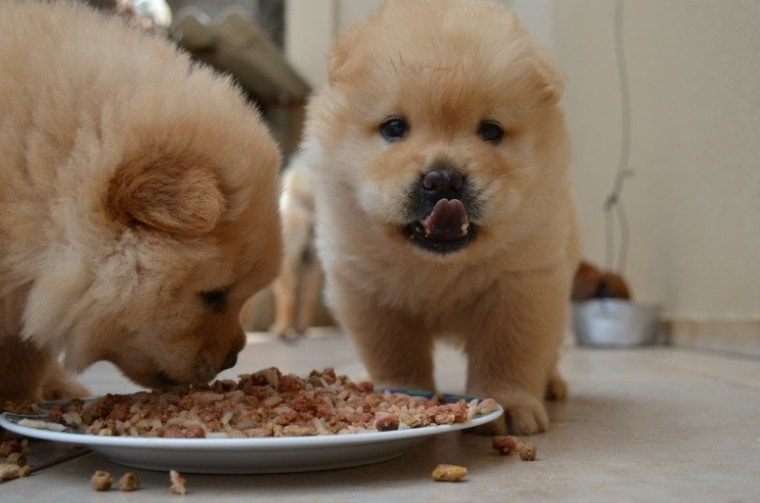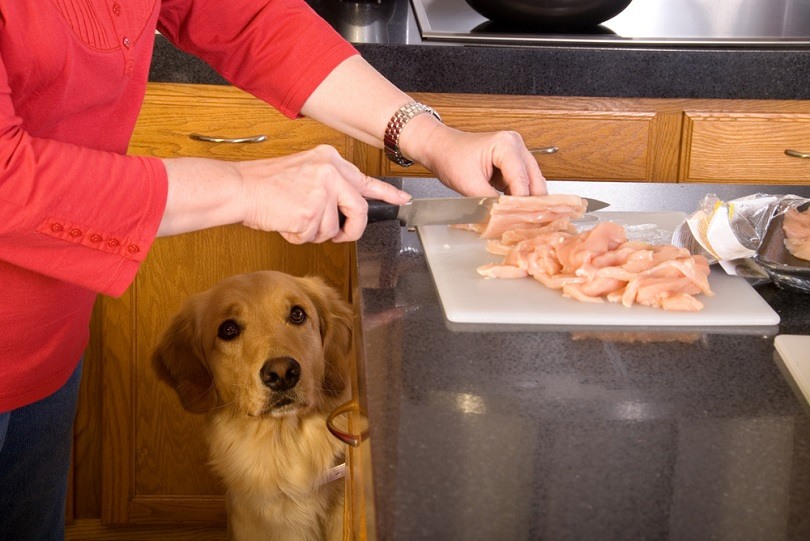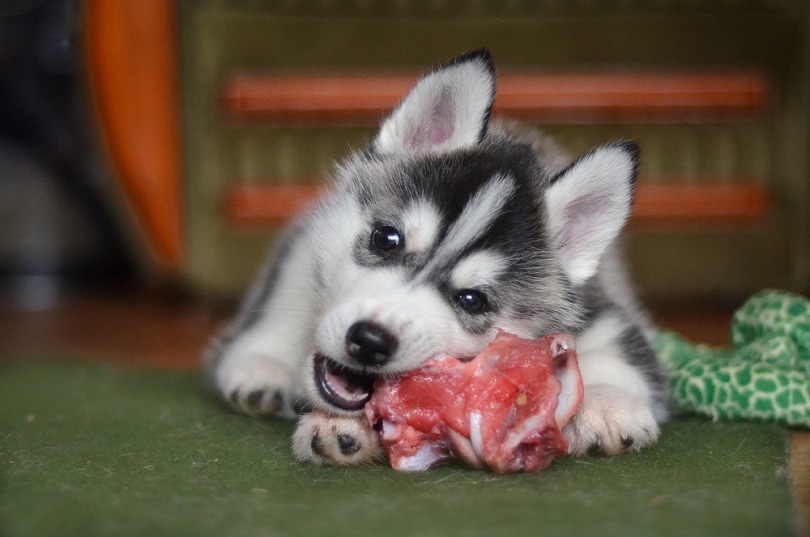
Diet is the foundation of good health, whether it’s for humans, hamsters, or dogs. Nutritional requirements often reflect what an animal needs to get from their food. These typically vary by species, with a bit of overlap.
Interestingly, dogs and people share about 84% of DNA. That means a canine diet will mirror many things in a human diet. However, that doesn’t mean both can eat all the same things. We all need proteins, fats, carbohydrates, vitamins, and minerals, for example, but in different amounts and ratios. Furthermore, certain foods can be edible for some but toxic to others. Humans can eat chocolate, but dogs—and many other animals—cannot.
It’s helpful to begin at the basic level of learning what types of food your pup should consume and what they shouldn’t.
Carnivore or Omnivore Diet
Whether dogs are carnivores or omnivores is a subject of intense debate. For a long time, scientists believed that they descended from wolves. That’s half true. Wolves are an ancestor of dogs, but a shared one. Both species diverged from an extinct animal, taking different evolutionary paths.
The arguments in favor of an omnivore include the length of a dog’s intestine. Animals that consume vegetation typically have a longer GI tract, since these foodstuffs take longer to digest. The chances are that you’ve seen your pup eat grass occasionally. Living with humans has also undoubtedly influenced their diet.
On the flip side, the evidence for the dog being a carnivore starts with their carnassial teeth. These enable carnivores to tear the flesh of prey. Canines also have forward-facing eyes so they can home in on their prey. They can also go for long stretches without food because meat will keep them satiated longer. Overall, dogs seem to be carnivores that have adapted to living with humans. They are “facultative carnivores,” which means that while they have adapted to be able to eat carbs from plant matter, they still need animal-derived proteins to thrive.

Macronutrients
Macronutrients are nutrients that are needed in large quantities; they are the basis of an organism’s diet. These are the protein, carbohydrate, and fat levels that are on pet food labels to help you compare products.
Micronutrients
Micronutrients are needed in very small quantities but are of great importance because their deficiency or excess can result in health issues. Each species has specific requirements regarding these vitamins and minerals, as some species can synthesize their own. For example, both humans and guinea pigs must get vitamin C from what they eat. But dogs can produce it within their bodies.
Different animals have varying nutritional requirements. You can use the nutrient profiles of the Association of American Feed Control Officials (AAFCO) as a guide to what your pup needs. Remember, though, these are mostly their minimum requirements.
The 5 Essential Nutrients Your Dog Needs
1. Protein
Proteins are complex molecules composed of smaller building blocks called amino acids. There are 21 known amino acids, of which nine are essential for humans and 10 for dogs. These are the ones that must be obtained via the diet because they cannot be synthesized. The value of a protein for a specific species depends on its amino acid composition and digestibility.
Proteins provide the building blocks for other chemicals in the body. They form the basis for a broad range of substances, from connective tissue to muscles to nails. Protein is not stored in the body, so the excess is either excreted or transformed into fat. That means an organism must consume it every day. Even though the minimal requirements for amino acids seem small, long-term deficiencies can have profound effects on a dog’s health and longevity.
Another thing to consider is your pet’s life stage. Puppies will need more protein to support growth and development than adult dogs do. Young animals require a large amount of protein per kilogram of body weight per day because they need to support their body’s growth and development, while adults only need to maintain their bodies. A minimal content of 22% protein is necessary for growing puppies, and 18% protein is necessary for adult dogs.

2. Fat
Fat provides a vital source of energy at 9 calories per gram. Dogs—and humans—will store excess quantities to ensure that a ready supply is always available. Of course, there are pros and cons to that fact. Nevertheless, fat is the raw material for many cellular structures and is critical for brain development and function. It also enables canines to store fat-soluble vitamins.
The amount varies with the life stage. A puppy needs 5.9 grams of fat per kilogram of body weight to supply the necessary energy for growth. An adult dog requires 1.3 grams. The percentages are 8% and 5%, respectively. Dogs must also get sufficient amounts of omega-3 fatty acids in their diet. Flaxseed is an excellent source of these nutrients, which is why you often will see them in ingredient lists.
3. Carbohydrates
Carbohydrates provide energy in a form that is more easily digested than fat. The output is lower, at 4 calories per gram. Carbs are considered quick sources of energy, and the consumption of simple carbs can spike blood sugar levels. Unfortunately, unlike the other macronutrients, there aren’t specific AAFCO guidelines for carbs, which resulted in many pet foods including an excessive amount of them in their formulas. Although carbs are a vital part of your pup’s diet, ideally they should be kept at the lower levels.

4. Vitamins
There are two main classes of vitamins: water-soluble and fat-soluble. The former is, as the name implies, dissolvable in fluids. Animals, including humans, cannot store them in their bodies. Therefore, they must get them every day. However, they will excrete what they can’t use, making excess amounts a waste. The exception is vitamin B12, which animals get from meat. Dogs can store it in their bodies. Unlike humans, dogs and cats don’t need to consume vitamin C because they can synthesize it. However, it is still very valuable as an immune booster during moments of disease.
Fat-soluble vitamins include A, D, and E. Dogs don’t need dietary vitamin K because bacteria in their intestines will synthesize it. Because these vitamins are fat-soluble, animals can store them in their fat tissue. That means that excessive amounts can be problematic because they can reach toxic levels. That’s particularly true with vitamin A. It’s another reason why feeding too many kidney treats, which are high in vitamin A from the original animal storing it, is not a wise option.
Interestingly, the minimal vitamin requirements are similar for both puppies and adult dogs. To ensure that your pup is getting sufficient amounts, look for the term, “complete and balanced,” on the label. That means the food has everything that your pet needs in adequate amounts.
5. Minerals
There are three categories of minerals based on the amount required and their nutritional value. Macrominerals include nutrients such as calcium, phosphorus, sodium, potassium, chloride, and magnesium. Pets—and people—require relatively large amounts in their diet. Essential trace minerals, such as iodine and iron, have much smaller minimum values; however, they also play a crucial role and are necessary for the body functions.
You may see other nutrients on the label that don’t fit in either of these two groups, such as molybdenum. Nonetheless, they are still present in commercial dog foods.
The other notable factor with minerals is the ratio between calcium and phosphorus. The reason is the absorption rates. If your dog gets too much phosphorus, it can interfere with their body’s ability to absorb and store calcium and vice versa. The ideal ratio for calcium and phosphorus is 1:1–2:1.
Balance is also essential. Excess amounts of minerals can cause serious health issues, especially in growing puppies. The maximum amount of calcium in growing puppies of large breeds needs to be 4.5 grams per every 1,000 calories of energy they can metabolize from food. Other puppies and adult dogs can have as much as 6.5 grams of calcium for every 1,000 calories of energy they can metabolize from food.
That’s why commercial diets are labeled as complete and balanced. You can rest assured that your pet is getting the correct amounts of everything that they need.
A Word About Calories
Obesity is a serious problem for dogs. It can put your pup at a greater risk of chronic health conditions, such as diabetes and heart disease. We suggest monitoring your dog’s body condition and adjusting their diet to keep them from becoming overweight.
The best way to manage pet obesity is prevention. It’s infinitely easier to control your dog’s intake than to get them to lose weight. Monitoring their diet will yield quicker results than increased activity. However, a combination of the two is even better.
Remember that treats should account for no more than 10% of your pup’s daily caloric intake. They won’t have the same nutritional value as a commercial diet. They are an effective training aid that you can better leverage in your favor if you limit how much your pet gets.
The recommended daily caloric intake for your dog varies with their ideal weight. Check out our handy pet calorie calculator to figure out an approximation of the calories your dog needs. You can use this in conjunction with the dog’s body condition score to make a healthy nutrition plan. We strongly recommend running every change you make to your dog’s diet by your vet.
The exact amount of calories an individual animal needs to maintain a healthy weight is variable and influenced by many factors including genetics, age, breed, and activity level. This tool is meant to be used only as a guideline for healthy individuals and does not substitute veterinary advice
Wrapping Up
Feeding your dog the correct amounts of a high-quality diet that provides nutrients in the quantities that they need is the single best thing that you can do as a pet owner. A good diet will offer an excellent foundation for growth and development while giving your pup the nutrition that they need to stay healthy and prevent disease. The essential takeaway is that the needs of canines are both similar and different from those of people.
Feeding them people foods is a slippery slope of poor nutrition, deficiencies, and potential allergic reactions.
See Also:
- Thiamine Deficiency in Dogs: 7 Signs to Look For (Vet Answer)
- What Is Preventive Care for Dogs? Vet-Approved Health Guidelines
Featured Image Credit: dneobr, Pixabay








